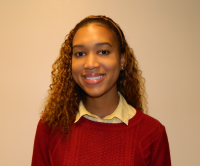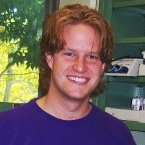 Ariel Ash-Shakoor
Ariel Ash-Shakoor
Bioengineering
My reseach interests are biomaterials and drug delivery. Currently, I work on a research project that focuses on smart biomateials for cell culture and tissue engineering applications. Cells and tissues are arguably the ultimate “smart materials”: dynamic material structures capable of changing their architecture and composition to control and to respond to their local microenvironment. Synthetic biomedical biomaterials must be able to integrate well with cells to augment damaged cells, treat diseases, and replace organs. However, biomaterials typically lack the natural robust architectural and compositional dynamics of cells. This project solves this problem by developing a biomimetic, dynamic, responsive biomaterial to enable significant advances across diverse biomaterials-based fields. The biomaterial combines two polymer systems: poly-electrolyte multi-layers with embedded biomolecules coated onto a shape changing polymer substrate. Furthermore, nano and micro biomimetic patterned topographies can be used with the polymer substrate. An intrinsic change within the polymer substrate can catalyze release of embedded molecules in the top coating for improved cell interactions. This research is the first to explore the novel combination of these two polymer systems. Such materials hold the promise of enabling smart materials and devices that not only control but also respond intelligently to the physiological environment.
2013 NSF IGERT Video & Poster Competition: Icing on the Cake: Coating Smart Polymers to Control Cell Interactions
2013 Soft Interfaces IGERT Retreat presentation: Shape Memory Polymers Meet Polyelectrolyte Multilayers
Faculty Advisors: Pat Mather & Jay Henderson
Fred Donelson
Bioengineering
My research focuses on developing a tissue engineered periosteal graft to aid in the treatment of critically sized bone fractures. Critically sized fractures are too large to heal on their own and may lead to amputation if not successfully treated. Current treatment methods have high failure rates often due to poor integration of bone grafts. Poor integration has been attributed to the lack of periosteum at the graft site. The periosteum is important because it generates osteoblasts that are essential for the bone healing process. I am using shape memory polymers (SMPs) that undergo expansion or a topographic change to aid adipose derived stem cells in differentiating down an osteogenic lineage. The goal is to create sheets of cells that can be removed from the SMPs and used as periosteal grafts to improve bone graft integration, thus improving treatment outcomes for patients with critically sized fractures.
2013 Soft Interfaces IGERT Retreat presentation: Design of Shape Memory Actuation Modalities to Enhance Stem Cell Osteogenic Differentiation
Faculty Advisors: Pat Mather & Jay Henderson
My interests center on the question of how cells perceive their environments. Understanding the way cells react to signals from their surroundings is one of the fundamental components of developmental biology. The process of taking in biological or chemical signals from the surroundings and reacting, whether in terms of producing tissue differentiation, variations in gene expression, or morphological changes, is one that underlies many of the difficulties faced by organisms as they move about, live, and reproduce.
In addition to biological cues such as hormones or morphogens and chemical signals like toxins or nutrient gradients, cells must also sense and react to subtle changes in their physical environment as well. Cells have been shown to differentiate depending upon the stiffness of their substrate, bones which are not exposed to stress become brittle over time, and bacteria are able to sense minute depressions in surfaces to swarm towards prey. Regardless of what form the signal comes as, the ability to perceive and react to it is critical for survival.
My past or present projects have all attempted to answer some question relating to how cells process the information around them and respond to it. These include: investigation of a co-receptor involved in BMP signaling, looking for a mechanism for bacterial mechanosensing of compressed hydrogels, characterization of signaling cascades in the developing ovary, and description of signaling mutants in the developing spinal cord.
2013 Soft Interfaces IGERT Retreat presentation: Bacterial mechanosensing of compressed hydrogels
Faculty Advisors: Anthony Garza
My primary research interest is to understand how particles assemble. Self-Assembly of nano-objects into well-defined clusters containing a predetermined geometry is under intense focus in materials chemistry and condensed soft matter physics. My research interest is to assemble clusters into defined tetrahedral geometry. To assemble these clusters gold nanoparticle surfaces will be functionalized with single stranded DNA. Complimentary strands of DNA on various particle surfaces will facilitate the assembly. My research project, incorporates experimental construction of such clusters from a bottom-up chemical approach, as well as multi-scale modeling of assembly dynamics. Some goals of the project include: controlling the interparticle spatial properties (distances), tailoring assembly morphology, phase, or symmetry, and monitor assembly in-situ. In order to understand larger assemblies, like lattices and crystals, we must first understand assembly at a fundamental level.
2013 Soft Interfaces IGERT Retreat presentation: Multi-Scale Modeling of DNA-Mediated Nanoclusters
Faculty Advisors: Mark Bowick & Mat Maye



